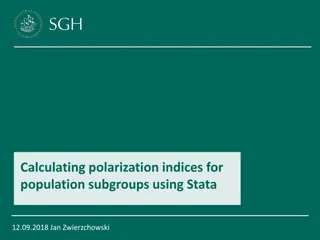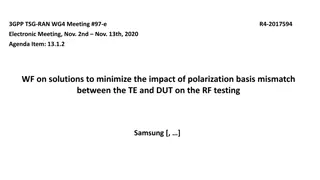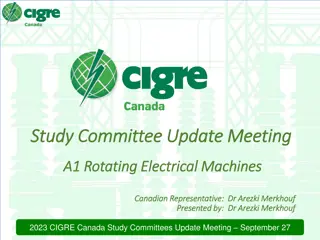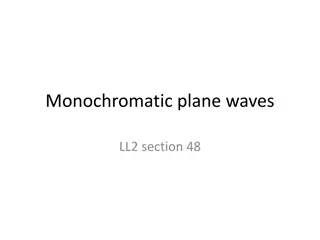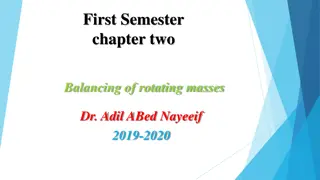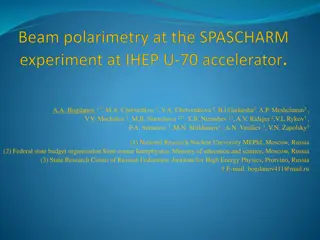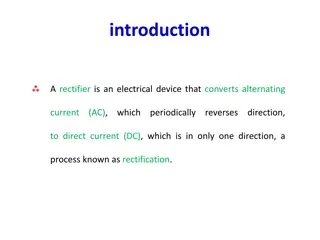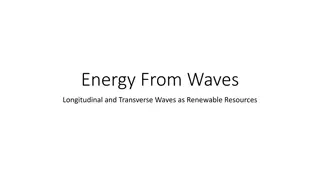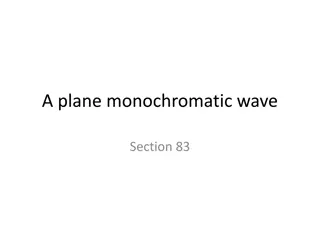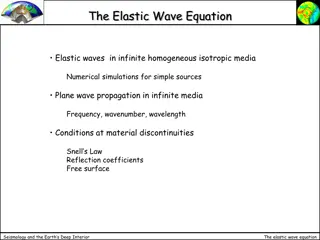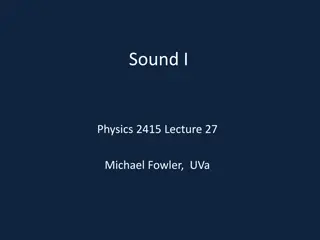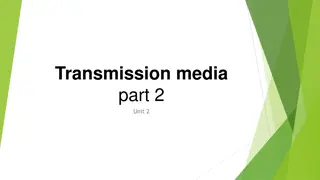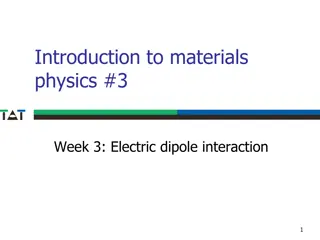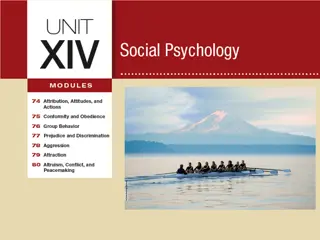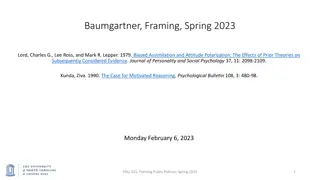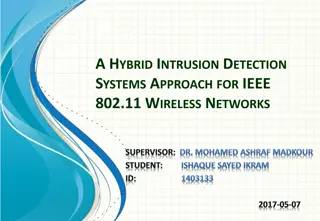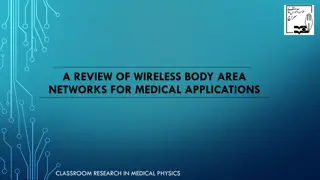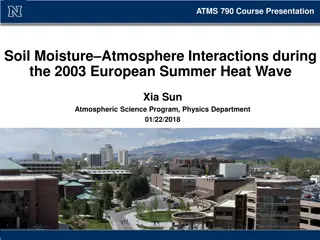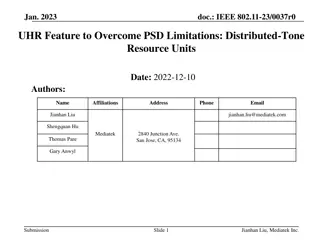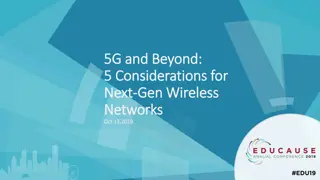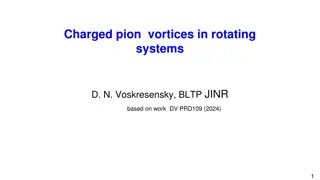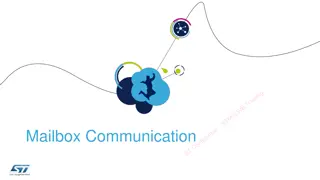Experimental Study of Rotating Polarization Wave (RPW) System in Wireless Communication
A wireless system controlling polarization for improved communication quality was tested successfully in various environments, enhancing quality especially in cluttered spaces without line-of-sight paths. By manipulating polarization, data transfer reliability and effectiveness were enhanced, overcoming challenges in IoT wireless systems. Through precise polarization control, both information quality and quantity were optimized for IoT applications, offering a solution to fluctuating propagation paths.
Download Presentation

Please find below an Image/Link to download the presentation.
The content on the website is provided AS IS for your information and personal use only. It may not be sold, licensed, or shared on other websites without obtaining consent from the author. Download presentation by click this link. If you encounter any issues during the download, it is possible that the publisher has removed the file from their server.
E N D
Presentation Transcript
March 2018 doc.: IEEE 802.11-18/357r0 Introduction to RPW- Experimental Study of a rotating polarization wave (RPW) system Date: 2018-03-04 Authors: Name Ken Takei Affiliations Hitachi Ltd. Address 1-280, Higashi- koigakubo, Kokubunji-shi, Tokyo, 185-861 Japan Phone +81 42 323 1111 email ken.takei.cb@hitachi.com Submission Slide 1 Ken Takei, Hitachi Ltd.
March 2018 doc.: IEEE 802.11-18/357r0 Abstract A wireless system that controls polarization to improve communication quality is proposed. A prototype of transceiver controlling polarization was manufactured and tested in various communication environment. Experiment data of these testing show that the proposed system successfully improved the quality especially in cluttered environment without any line-of-sight paths. Submission Slide 2 Ken Takei, Hitachi Ltd.
March 2018 doc.: IEEE 802.11-18/357r0 Polarization Dependable Wireless Communication Systems Penetration comm. Comm. in rich reflection Comm. through narrow gap fixed fixed Irregular Reflection waves Regular (Snell s) reflection waves Submission Slide 3 Ken Takei, Hitachi Ltd.
March 2018 doc.: IEEE 802.11-18/357r0 Problems of Wireless System for IoT Quality of Information Propagation paths through which data of sensor are transferred fluctuate and deteriorate information quality. Quantity of Information Conventional wireless system hardly communicates with a sensor not only in and through materials but also beyond narrow gaps and slits. Challenges By using both a digital signal processing device and physical characteristics of the electromagnetic wave, the special conditions of the wave that overcome unstable reception and not leachable paths are realized. Submission Slide 4 Ken Takei, Hitachi Ltd.
March 2018 doc.: IEEE 802.11-18/357r0 Solution with Polarization Motivation An Electromagnetic wave propagates through discontinuous boundaries, i.e., a material interface, a narrow gap, and a slit, when polarization satisfies special Condition on the boundary. The wireless system using precious polarization control improves both quality and quantity of information for IoT applications. Propose The transmitter sends information on the electromagnetic wave whose polarization rotated at a very lower frequency than that of the carrier. The receiver captures information at many different timings within the entire period of the polarization rotation. Both the transmitter and receiver use the optimum polarization that improves quality and quantity of information even though propagation paths are fluctuated. Submission Slide 5 Ken Takei, Hitachi Ltd.
March 2018 doc.: IEEE 802.11-18/357r0 *RPW Transmitter RPW transmitter cos pt polarization fc fc p/2 sin pt RPW s slowly rotating polarization let receiver measure the polarization with arbitrary two antennas by using digital signal processing technologies. *Rotating Polarization Wave Submission Slide 6 Ken Takei, Hitachi Ltd.
March 2018 doc.: IEEE 802.11-18/357r0 RPW Receiver LPF* Baseband Data Polarization Selection DEMOD fc ... LPF* Rearrange p/2 0 45 90 0 1 1 ... 0 1 1 0 1 1 Serial-Parallel DEMOD ... ... ... 0 1 1 315 0 180 0 180 0 180 0 180 Submission Slide 7 Ken Takei, Hitachi Ltd.
March 2018 doc.: IEEE 802.11-18/357r0 Prototype Radio Features Zynq7000 SoC (FPGA + ARM core) AR9361 (RF 2x2 transceiver with 12bits DACS and ADCs) 2 HPA and 2 LNA *Cross dipoles TDD system Carrier frequency 920MHz (ISM 900 MHz bands) Polarization frequency 125kHz Data rate 64bps Output power <20dBm DBPSK modulation 8MHz Carrier sense operation Radio certifications (Japan, Singapore, Malaysia) 30x20x5 cm size *cross dipole Submission Slide 8 Ken Takei, Hitachi Ltd.
March 2018 doc.: IEEE 802.11-18/357r0 Field Test in Office (setup) Experimental setup Tx in closed shelf Rx in closed shelf Specifications Output power -20dBm Carrier frequency 920MHz Polarization rotation frequency 125kHz DBPSK Modulation frequency 8MHz Data Rate 64bps Submission Slide 9 Ken Takei, Hitachi Ltd.
March 2018 doc.: IEEE 802.11-18/357r0 Field Test in Office (results) Receiving power [dBm] -70 Packet Error Rate 10-0 -75 10-1 RPW RPW *FPW -80 *FPW 10-2 -85 10-3 -90 -95 10-4 Case 1 Case 2 Case 1 Case 2 *Fixed Polarization Wave Submission Slide 10 Ken Takei, Hitachi Ltd.
March 2018 doc.: IEEE 802.11-18/357r0 Field Test in Factory (setup) Experimental setup 20m 30m Tx 280m Rx3 Rx2 Rx1 Specifications Output power for measuring receiving power 10dBm Output power for measuring PER 0dBm Carrier frequency 920MHz Polarization rotation frequency 125kHz DBPSK Modulation frequency 8MHz Data Rate 64bps Submission Slide 11 Ken Takei, Hitachi Ltd.
March 2018 doc.: IEEE 802.11-18/357r0 Field Test in Factory (results) Receiving Power[dBm] -66 Packet Error Rate 10-0 10-1 -68 RPW FPW 10-2 -70 RPW FPW 10-3 -72 10-4 -74 10-5 -76 Rx1 Rx2 RX3 radio1 radio2 radio3 Submission Slide 12 Ken Takei, Hitachi Ltd.
March 2018 doc.: IEEE 802.11-18/357r0 Summary Wireless system achieves to transfer signals to EM wave hardly reachable position by using an optimum polarization. RPW system slowly rotates transmitting polarization and receives many useful polarizations at different timings A signal transferred on the RPW arrived at the receiver trough a narrow gap of a closed office cabinet. The RPW system improved receiving power over 10 dB and PER performance at least one order than those of the average operation of the fixed polarized system. Submission Slide 13 Ken Takei, Hitachi Ltd.
March 2018 doc.: IEEE 802.11-18/357r0 References K. Takei, Polarization angle diversity for highly-reliable machine-to-machine radio, in Proc. 2013 IEEE ICCPCT., pp. 825-828. M. Aono, K. Takei, Polarization angle diversity and quick decodable block code for M2M wireless communication, in Proc. 2014 APMC. M. Aono, Polarization angle diversity and new digital software radio architecture, in Proc. 2015 IEEE ICCPCT, paper-ID 545. H. Yamada and K. Takei, Evaluation of communication coverage of the Rotating Polarization Wave wireless, in Proc. 2017 IEICE society meeting, paper-ID B-5-93. News release 2017.9.11 Hitachi successfully developed the rotating polarization wave radio device that achieves high quality wireless communication in a manufacturing place with many obstacles, URL: http://www.hitachi.co.jp/New/cnews/month/2017/09/0911.html Submission Slide 14 Ken Takei, Hitachi Ltd.


